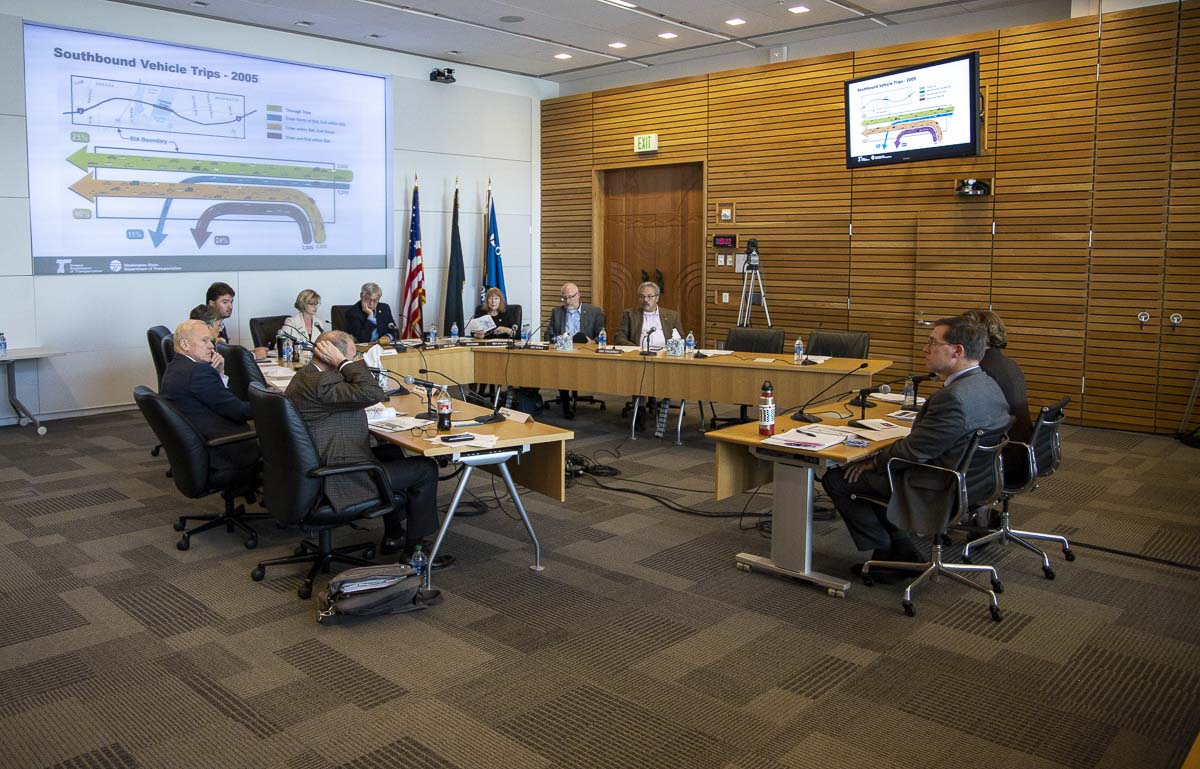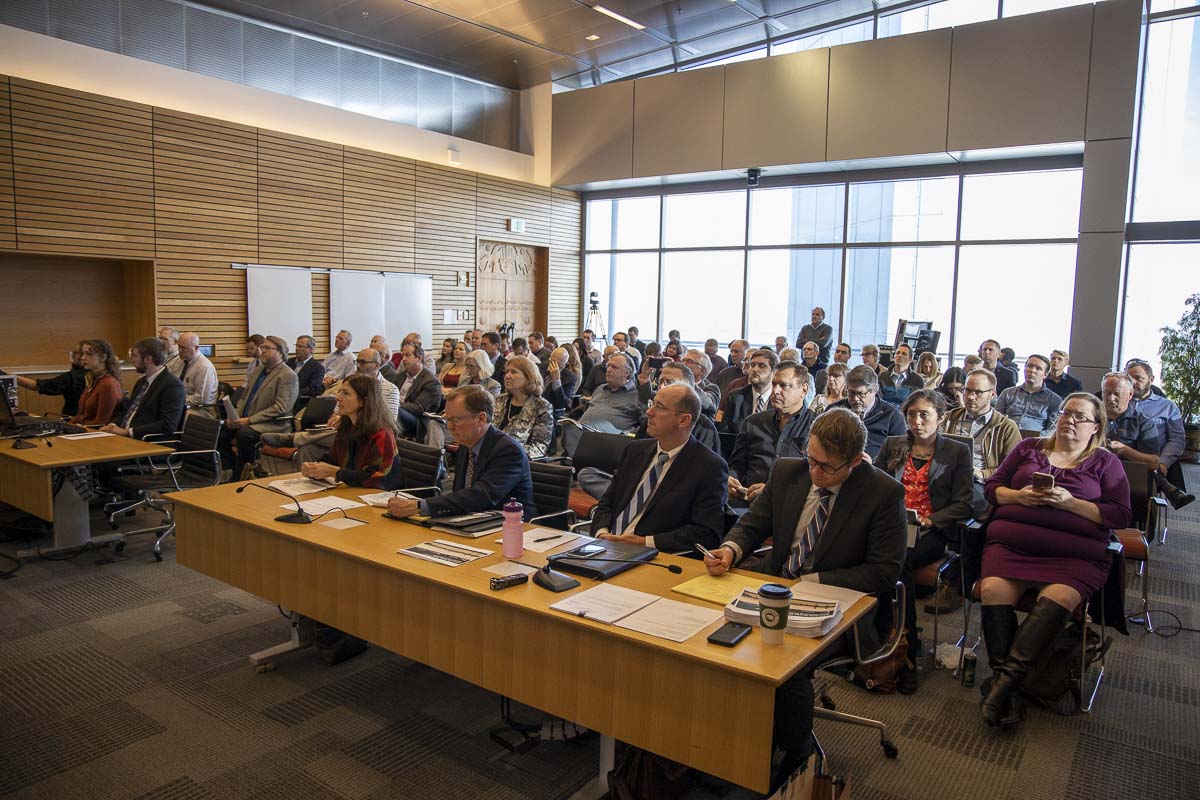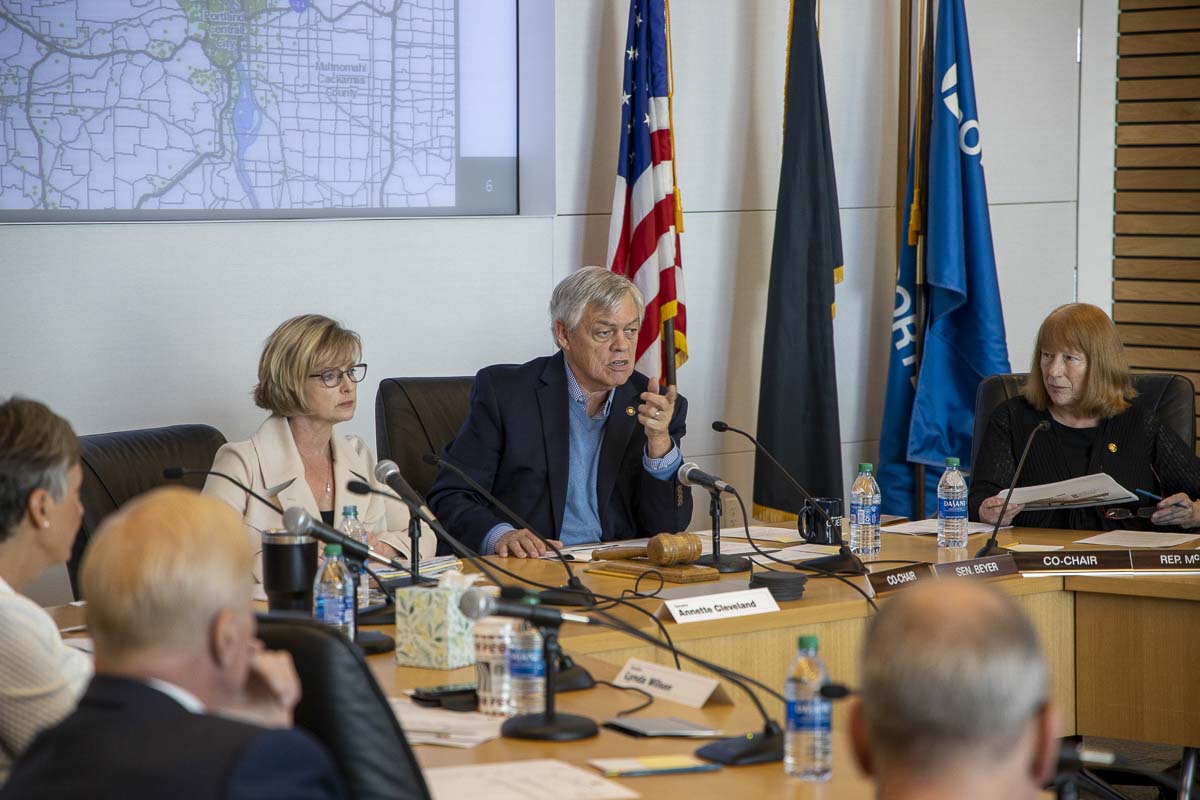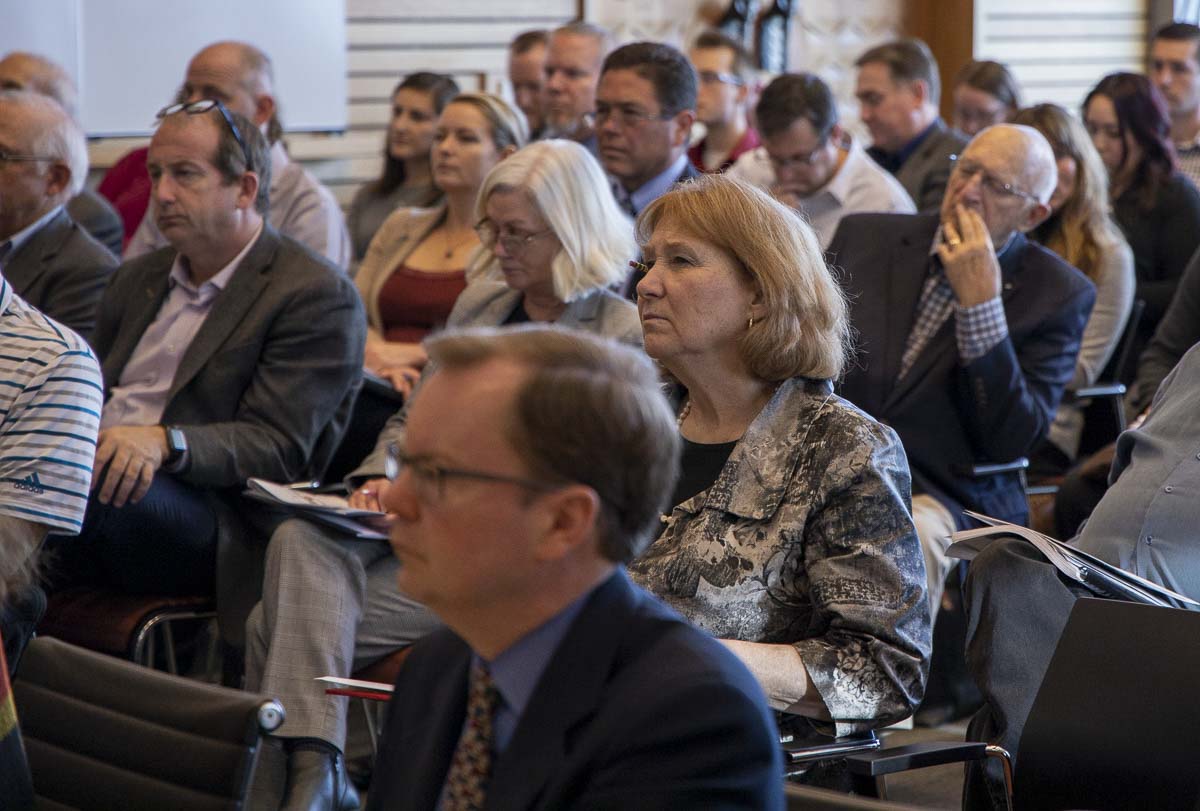The group is hoping much of the research for that failed project can be used in this latest effort
PORTLAND, Ore. — During a two-hour presentation at the second meeting of the Joint Committee on the Interstate 5 Bridge, an aerial shot showed old scars in the grass of a freeway ramp on the Vancouver side of the Columbia River — the result of archeological work done over a decade ago to look for historic relics that might impede the footprint of a new Interstate Bridge along I-5.

It was a fitting image as the group of 16 state lawmakers, eight each from Oregon and Washington, seeks to unearth remnants of the $140 million worth of studies that went into coming up with the Columbia River Crossing (CRC).
That ill-fated $3 billion project died in 2013 after Washington lawmakers declined to match funding approved by Oregon. Now, facing a deadline to repay federal grant money, the two states are hoping some of the extensive research that went into coming up with the CRC can be used in the formation of a new project.
“While a lot of our permits have expired … there’s a lot of that work, we can pick up, reaffirm, re-analyze it and not be starting from scratch,” says Travis Brouwer, assistant director for public affairs with the Oregon Department of Transportation (ODOT). “Of course, depending on the direction that the legislatures, states, and the federal government and the local leaders end up going.”
Brouwer was answering a question posed by Sen. Annette Cleveland (D-Vancouver) about whether it was reasonable to assume this new project would take five years of study and analysis, similar to the CRC.

Brouwer and his Washington colleague Carley Francis, the regional administrator for WSDOT, spent much of the meeting at the Port of Portland’s main office at PDX delivering abbreviated rundowns of the many hurdles the CRC had to clear on its way to becoming the Locally Preferred Alternative that many, it turned out, did not prefer.
The CRC Task Force, a group of 39 stakeholders, started in 2005 with a list of 76 potential solutions. The process of whittling that list down included looking at the options in light of whether they answered six questions. Did they increase vehicular capacity or reduce vehicular demand, improve transit performance, increase freight mobility, or address the seismic safety concerns for the century-old existing span.
The new span also needed to sit within a narrow window of height, to allow river traffic beneath and air traffic from PDX and Pearson Airpark above. Then, there were environmental concerns for the river, as well as numerous historic landmarks and city parks on the Vancouver side.
The CRC Task Force voted 37-2 in favor of the proposed bridge in June of 2008. It would have included three travel lanes each direction, same as the existing bridge, with up to three auxiliary lanes. Most controversially, at the time, it would have also included an extension of light rail from Portland into Clark County.
Brouwer noted the process of getting the CRC authorized included working with 129 partner agencies, the federal government, and more.
“I want us all to think about the amount of work that was done, and I want you to think about how many experts and people worked on this,” said Rep. Susan McClain (D-Hillsboro), one of the committee’s four co-chairs. “And so for me, it’s trying to figure out how do we utilize as much of that expertise and that time and that energy, and all of the public comments and everything else that we have. We have those, we haven’t lost them.”

While Brouwer and Francis maintained that the CRC was the only option that satisfied the bulk of the questions the project needed to answer, they admitted that things have changed in the six years since its demise.
“The bridge having lift span, and the hump in the middle of it, those things don’t change,” noted Francis. “But there are the performance factors that are important to update.”
Those would include a new traffic analysis, including where crashes are happening in the corridor and how frequently, along with new population density studies to see how much has changed in terms of where people are coming from and where they’re going during their daily commute.
Even as the committee spent time looking back, unearthing the past in hopes of finding usable data for this new effort at replacing the bridge, there were plenty of comments making it clear the group still isn’t sure exactly what their primary purpose is.
Sen. Lew Frederick (D-Portland) spoke to the concerns of many gathered in the room, noting that a new bridge, even with added capacity, would do little to fix the bottleneck on I-5 northbound at Columbia Boulevard, or southbound at the Rose Quarter.
“Despite the idea that we would do something at the bridge with the crossing itself,” said Frederick, “it was going to stall and continued to have congestion until you got to the new improvements.”

That problem, noted several lawmakers, meant that the committee may need to adjust its perspective. If replacing the bridge can do little to address problem spots elsewhere on I-5 in Portland, then perhaps the goal needs to be safety or mass transit, rather than relieving traffic congestion. Though, Sen. Lee Beyer (D-Springfield), one of four committee co-chairs, noted that relieving congestion should be a goal, if only for addressing the pollution of thousands of vehicles stuck on the freeway for hours every day.
“I think it’s pretty plain that the six problems that we identified previously have not gone away,” noted Francis, to which Beyer quipped, “It’s pretty obvious that things haven’t gotten better.”
Public comment
The public comment period of the meeting took much less time than at the group’s first meeting in October.
Several people again brought up the idea of a third crossing, urging the lawmakers to bring the Southwest Washington Regional Transportation Council’s 2014 study on the matter into the discussion. That plan described additional Columbia River bridges as essential to the growth of the region.
John Ley of Camas noted that ridership for both C-TRAN and Tri-Met have continued to decline, despite new light rail lines, bus lines, and increased population growth in the region.
“If you take transit out of the questions, you get a whole lot of different answers,” said Ley, recalling the issues over a 5-mile bridge influence area created by the inclusion of light rail. “And that’s what the people want. Focus on congestion.”
Rep. Vicki Kraft (R-Vancouver), of Clark County’s 17th District, said the committee needs to determine its top priorities before it gets too far along.
“Vehicle capacity, transit performance, freight improvement, safety, bike and pedestrian, and reducing seismic instabilities,” listed Kraft. “Those are vastly different things, and whichever one you prioritize is going to drive a very different outcome.”
Kraft urged the committee to put commuters first, including the 70,000 or so who commute to and from Clark County every day for work, as well as the businesses wasting money stuck in traffic.
“The emperor has no clothes, and I’m here to call it out,” added Kraft. “If we only do one solution right now, it’ll be at least 30-50 years before anything else gets done and our business community suffers.”
Next steps
The committee is next scheduled to meet Dec. 20 at a yet-to-be-determined location on the Washington side of the bridge. While the agenda hasn’t been released yet, the group expects to cover previous studies around transit options for the bridge.
If you have a question or comment for the committee, they can be submitted via emil to ji5b.exhibits@oregonlegislature.gov.
Documents and full video of each meeting is available on the Oregon Legislature’s website here.




